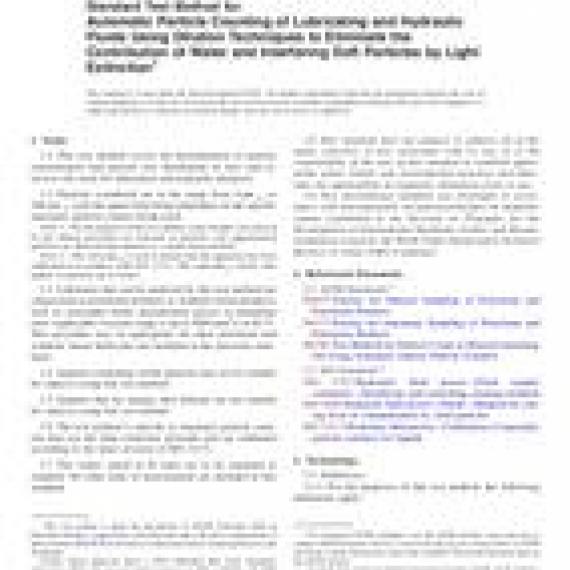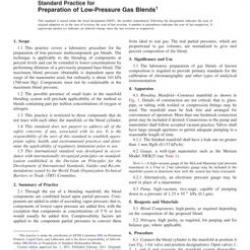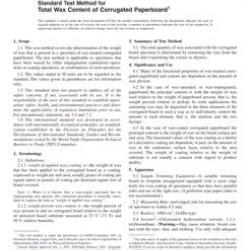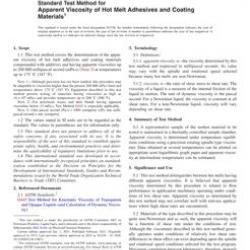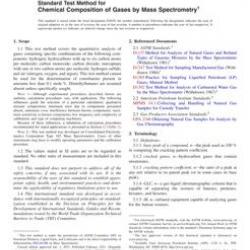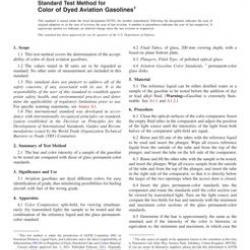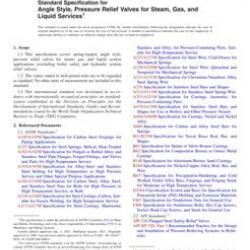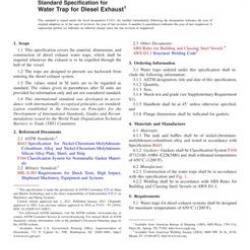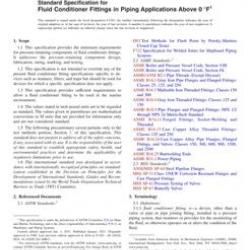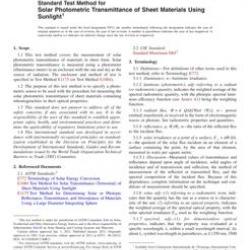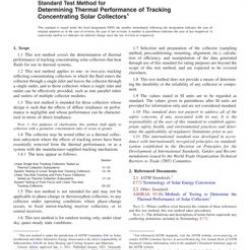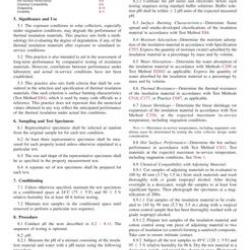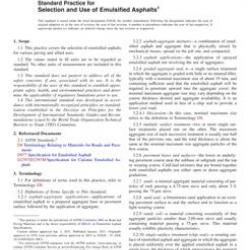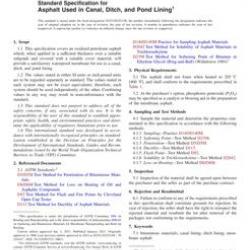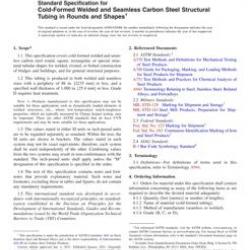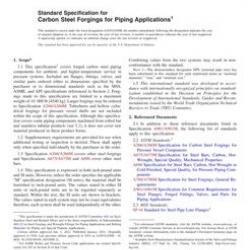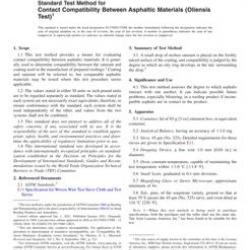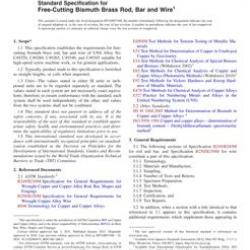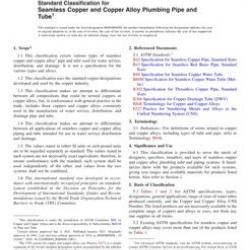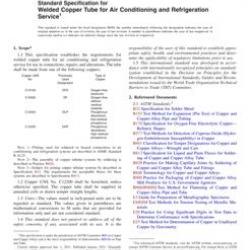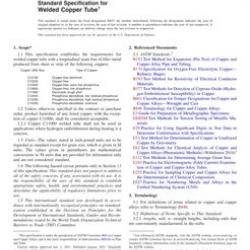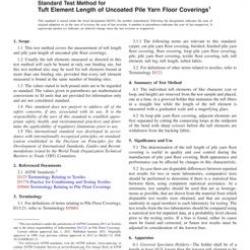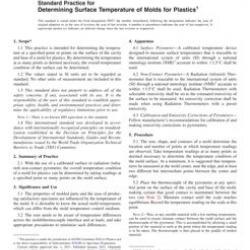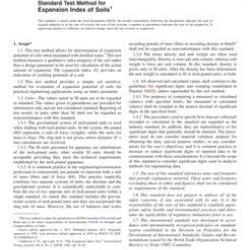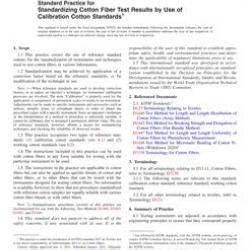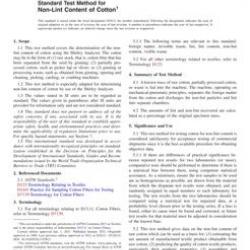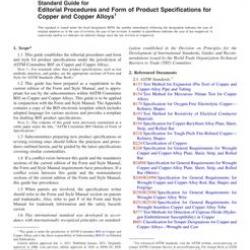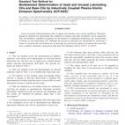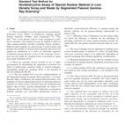No products
ASTM D7647-10(2018)
ASTM D7647-10(2018) Standard Test Method for Automatic Particle Counting of Lubricating and Hydraulic Fluids Using Dilution Techniques to Eliminate the Contribution of Water and Interfering Soft Particles by Light Extinction
standard by ASTM International, 04/01/2018
Full Description
1.1This test method covers the determination of particle concentration and particle size distribution in new and in-service oils used for lubrication and hydraulic purposes.
1.2Particles considered are in the range from 4m(c) to 200m(c) with the upper limit being dependent on the specific automatic particle counter being used.
Note 1:For the purpose of this test method, water droplets not masked by the diluent procedure are detected as particles, and agglomerated particles are detected and reported as a single larger particle.
Note 2:The subscript (c) is used to denote that the apparatus has been calibrated in accordance with ISO 11171. This subscript (c) strictly only applies to particles up to 50m.
1.3Lubricants that can be analyzed by this test method are categorized as petroleum products or synthetic based products, such as: polyalpha olefin, polyalkylene glycol, or phosphate ester. Applicable viscosity range is up to 1000mm/s at 40C. This procedure may be appropriate for other petroleum and synthetic based lubricants not included in the precision statement.
1.4Samples containing visible particles may not be suitable for analysis using this test method.
1.5Samples that are opaque after dilution are not suitable for analysis using this test method.
1.6The test method is specific to automatic particle counters that use the light extinction principle and are calibrated according to the latest revision of ISO 11171.
1.7The values stated in SI units are to be regarded as standard. No other units of measurement are included in this standard.
1.8This standard does not purport to address all of the safety concerns, if any, associated with its use. It is the responsibility of the user of this standard to establish appropriate safety, health, and environmental practices and determine the applicability of regulatory limitations prior to use.
1.9This international standard was developed in accordance with internationally recognized principles on standardization established in the Decision on Principles for the Development of International Standards, Guides and Recommendations issued by the World Trade Organization Technical Barriers to Trade (TBT) Committee.

